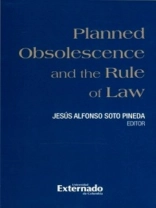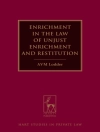La presente publicación expone los resultados de la más reciente investigación sobre los call center (o contact center) en Colombia. Se trata de empresas ‘contratistas’, cuya actividad esta orientada a la atención telefónica de la clientela ‘de empresas ‘contratantes’ de sus servicios. Dichas ’empresas buscan este servicio con la finalidad de acercar y fidelizar su propia clientela, promocionar sus productos y servicios, optimizando sus transacciones con el mercado, así como prestar atención y solución a las consultas o reclamos de sus propios clientes.Los call center pertenecen al grupo líder de las innovaciones de la era de la globalización, hechas posibles por la revolución tecnológica ocurrida en el manejo de la información y las comunicaciones (informática y telemática), que llevó a que la sociedad y la economía funcionaran a escala mundial como una unidad en tiempo real. Revolución que permitió la relocalización de las actividades económicas, una de cuyas manifestaciones es el hecho de que las empresas puedan entrar en contacto con sus clientes actuales y potenciales en tiempo real en todo momento y en todos los lugares del mundo, por medio de los call center. Gracias a esta evolución, en Colombia la industria de los call center ha logrado mantener en los últimos años un crecimiento promedio del 27% anual, con más de 200.000 personas empleadas, lo que la convierte en el segundo país más competitivo en esta actividad en América Latina. De ahí el interés por realizar el estudio cuyos resultados publica este libro. La investigación está orientada, y por una parte, a establecer y a analizar la actividad económica de los call center y sus relaciones con las empresas que contratan sus servicios, así como los efectos que esta forma de tercerización tiene sobre la productividad y competitividad de las empresas. Los actores principales, desde este punto de vista, son las empresas que ‘contratan’ los servicios de los call center, a las cuales Se llama ’empresas contratantes’ y los call center contratados por las primeras, a los que se nombra ’empresas contratistas’ Por otra parte, se busca caracterizar la forma de gestión empresarial y las relaciones sociolaborales junto con las condiciones dé trabajo vigentes en este tipo de empresas, así como las políticas de productividad, calidad y gestión del personal y los mecanismos que utilizan las empresas contratantes para lograr la fidelización de sus clientes y desarrollar sentido de pertenencia en los trabajadores operarios de los call center.
قائمة المحتويات
CONTENIDO
PRESENTATION
Jesús Alfonso Soto Pineda
CHAPTER 1
PLANNED OBSOLESCENCE: A NON-RESTRICTABLE INDUSTRIAL PRACTICE? ANSWERS FROM CONSTITUTIONAL LAW, COMPARED LAW AND ABUSE OF THE LAW
Magdalena Correa Henao
1. Introduction
2. Planned obsolescence: What is It?
3. Planned Obsolescence from Constitutional Law and Legal Assets in Dispute
4. Answers from Sources of Law and Assessment
5. A Complementary Solution: An Answer from the Principle of Non-Abuse of Rights
II, Conclusion
Bibliography
CHAPTER 2
THE EUROPEAN UNION VS. PLANNED OBSOLESCENCE: A VAIN STRUGGLE?
Raquel Regueiro Dubra
I. Introduction
II. The lack of regulation at the international level
III. Common Market and consumer protection in the European Uníon
1. European consumer protection measures
2. The impact of obsolescence on the internal market
IV. The fight against planned obsolescence in the European Union: marginal, indirect and specific
1. Directive 2006/66/ ec on batteries and accumulators and their waste products
2. Directive 2009/125/EC on ecodesign
3. Directive 2008/98/EC on residues
V. The impetus of the European Economic and Social Committee and Directive 2014/53/EU
1. The first proposals of the European Economic and Social Committee
2. Directive 2014/53/EU
3. The latest developments
VI. Planned obsolescence and Member States
VII. Conclusion
Bibliography
CHAPTER 3
COMMENTS ANO ANSWERS TO PLANNEO OBSOLESCENCE THROUGH CONSUMER PROTECTION LAW
Jesús Alfonso Soto Pineda
I. Introduction
II. Consumer protection Law and Planned Obsolescence
1. On the subject of information
2. Regarding the possibility and decision of repairment
3. Considerations about contracts
4. The Warranty
III. Conclusion Bibliography
CHAPTER 4
PLANNED OBSOLESCENCE ACHIEVED THROUGH RESTRICTIONS IN THE AFTERMARKETS
Camilo Pabón Almanza
I. Consumers cannot anticipate the lifetime of each product
1. The lifetime of a product depends on the operation of two complementary markets
2. Information asymmetries – Eastman Kodak
3. Exploitation of the information asymmetries II. Governmental intervention to increase the lifetime of products
4. Cases in which intervention was not necessary – Keurig 2.0
5. If the Government intervenes
III. Conclusion
Bibliography
CHAPTER 5
THE ‘WINDING CRUSADE’ AGAINST PLANNED OBSOLESCENCE: ADVOCATING FOR THE RECOGNITION OF AN ENVIRONMENTAL INTERNATIONAL CRIME AND THE INTERNATIONAL SUBJECTIVITY OF MULTINATIONAL CORPORATIONS
Jacqueline Hellman Moreno
I. The Definition of Planned Obsolescence and Its Consequences
II. The Status Qua of Environmental Regulation in the Field of Planned Obsolescence
1. General considerations on existing environmental regulation
2. The dubious effectiveness of the Basel Convention on the Control of Transboundary Movements of Hazardous Wastes and Their Disposal
3. The role of the European Union in the field of planned obsolescence
III. The Recognition of Serious Environmental Misbehaviours as international Crimes
1.The consequences of recognizing serious environmental misbehaviours as international crimes: the application of the principle of universal justice and the action of the International Criminal Court
2. The desirability of subsuming planned obsolescence as a new environmental crime of an international nature: ECOCIDE
3.Is it possible to articula te the existence of responsibility when referring to international crimes committed by corporations?
IV. Conclusion
Bibliography
CHAPTER 6
CONSUMER PROTECTION AGAINST PLANNED OBSOLESCENCE AN INTERNATIONAL PRIVATE LAW ANALYSIS
William Fernando Martínez Luna
1. Introduction
2. Planned Obsolescence
3.Approach to the definition of planned obsolescence












